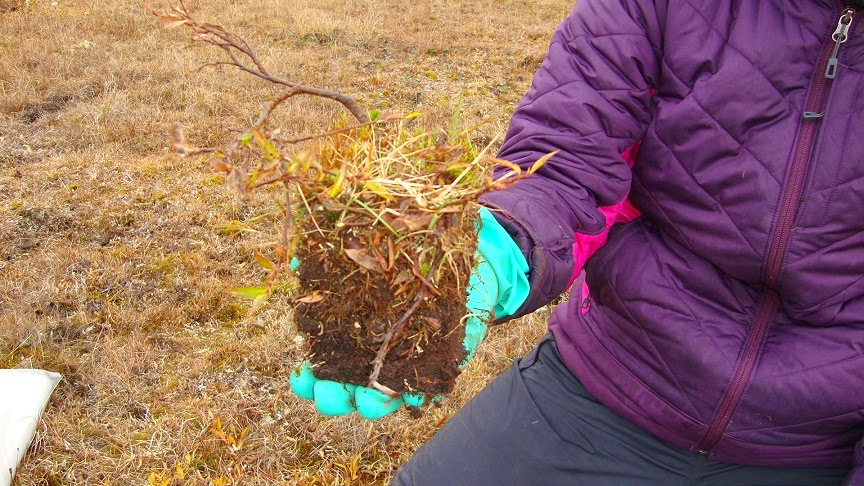Characterized by vast amounts of carbon stored in permafrost and a rapidly evolving landscape, the Arctic is an important focal point for the study of climate change. These are sensitive systems, yet the mechanisms responsible for those sensitivities remain poorly understood and inadequately represented in Earth System Models. The NGEE Arctic project seeks to reduce uncertainty in climate prediction by better understanding critical land-atmosphere feedbacks in terrestrial ecosystems of Alaska.
Saturday, August 30, 2014
Available Forms of Nitrogen for Tundra Plants and Microbes…
Yesterday was a productive day for all NGEE Arctic teams
working on the tundra. Today our group left the Herman House apartment with a
couple of goals. One was to complete surface and pore water sampling for
geochemistry; another was to continue vegetation resurveys for the purpose of
fine-scale mapping of plant functional types (PFTs) across polygons. Mallory
and I also wanted to finish sampling of soils that she began two days ago for
analysis of nitrogen availability. While Mallory has not yet developed the full
scope of her PhD studies, she is interested in better understanding the
interplay between soil organic matter decomposition and the forms of nitrogen
ultimately made available for plants and microbes. More specifically Mallory
would like to combined advanced analytical methods with some aspect of plant
and microbial biology, and therein characterize the pool size and diversity of
low molecular weight (LMW) nitrogenous compounds in soils. There is a
considerable amount of published literature on nitrate and ammonium
availability in tundra soils, but LMW compounds that can be used by plants and
microbes as a source of nitrogen are also important. However, they have not
been fully characterized. Working with Bob Hettich and Rich Norby at ORNL and
as a student through the Bredesen Center for Interdisciplinary Studies and
Graduate Education, Mallory has the opportunity to merge powerful mass
spectroscopic approaches (MALDI and electrospray ionization sources) and field
ecology, into a single program of study. But before she can do this, Mallory
needed to obtain a range of samples from the Barrow Environmental Observatory
(BEO) so she could conduct preliminary studies to refine her techniques and
then, equally important, the questions that Mallory would like to tackle will also
need to be developed. She identified plots within low- and high-center polygons
and excavated a small monolith of soil from the upper active layer. She did
this at a number of locations making sure that she had adequate replicates and
samples for areas that supported the growth of several different plant species.
This way Mallory can assess her early work in terms of variation in nitrogenous
compounds due to topographic location and species composition. Once samples
were collected they were labeled, placed in plastic bags, packed into a cooler,
and will be shipped to ORNL later this evening. Mallory will be busy during the
coming months and it will be interesting to see how her research develops both
with regards to fundamental science and integration of that knowledge into
models.








